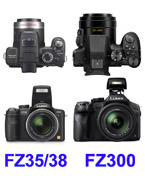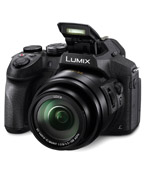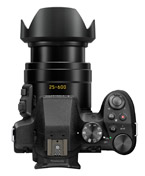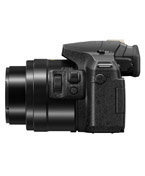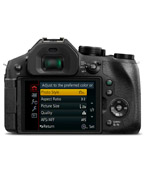Close-Up (Macro) photography
Close-Up and the FZ300
As in most Panasonic compact cameras, the “macro” or close-up capability of this camera is nothing less than miraculous. With a wide-angle zoom setting you can focus as near as 1ft/30cm, and if you set the Auto-Focus to Close-Up (by pressing the side button and selecting “AF Macro” from the menu) you can take a picture with the lens less than ½in./1cm away from the subject. Impressive. In the following picture you get a magnification of about 30 times with good sharpness: the camera is actually acting as a small microscope!
If however the zoom is in the telephoto range, then the close-up range is very limited: the minimum focusing distance is a paltry 1mt. But then you have another option in the “Macro” menu: see Macro Zoom further below.
- Attention! The "AF Macro" setting is memorised. You may store away the camera, use it again days later and you will be puzzled finding that, while many normal-range pictures will come on focus, some others will not. Always remember to deactivate the “AF Macro” once you have used it!
Macro Zoom sharpness
The FZ300's “Macro Zoom” setting allows to take pictures when the “AF Macro” fails, for example when either (1) the distance from the lens to the subject is so small that the camera's lens will prevent light from reaching the subject, or (2) with the camera farther away the zoom (no longer in wide-angle) fails to focus.
However, Macro Zoom has some loss of sharpness with respect to either common AutoFocus or AF Macro: only when the latter will not do should you use the Macro Zoom feature.
Camera vs Scanner
If an object is reasonably flat (not necessarily completely flat: scanners also have depth of field) the question arises: is it sharper a close-up photo or a scan? And the answer is: it depends on the camera, on the scanner and on what you want to do.
A first conundrum is that scanners work in dots-per-inch(dpi) and therefore the resolution depends on the area scanned. A camera instead (working at maximum resolution) has a fixed resolution for the whole picture. The comparison becomes possible if we have the same subject, let us say a printed page. We wish the page to have the same 4:3=1.333 proportion as the FZ300 at maximum resolution. So let us scan an A4 page (297x210mm): this has a ratio 297:210=1.414, so we have to leave out some margin on top and bottom to achieve the desired 1.333. Let us now turn the picture 90º and we have a picture height of 210mm. If we scan this at the moderate resolution of 400dpi (dots per inch), dots are the same as line widths, but we need to convert the height in millimetres into inches: 210mm=210/25.4in=8.268in. Therefore, for this subject, the scanner's 400dpi is equivalent to 400x8.268 lw/ph=3307 lw/ph. Actually the scanner may achieve a very slightly lower resolution, let us say 3000 lw/ph, but this will still be visibly ahead of the 2000 (or even less) that we get from the FZ3000 (see our Sharpness webpage). We can improve things for the camera significantly by taking a picture of only a quarter of A4 size (half the width and half the height), called A6. We will still have around 2000 lw/ph in the camera, but the scanner will be 3307/2=1654: at this point, however, we can bring the scanner up to 800 lpi, and then the A6 page will again have 3307 lw/ph! It looks as if the scanner will always be the winner.
Let us now take some test pictures and see if a visual comparison agrees with the above calculations. I will use my FZ300 camera and a 10-year-old CanoScan 4200F, certainly not a scanner-favourable comparison. The subject will be a Russian banknote from early 1917 when, with the Tsar fallen, the parliament ("Duma") took the government, famously superseded 8 months later by the October Revolution.
Full banknote comparison: Scanner at 400dpi vs FZ300 in “AF Macro”. Let us reproduce below samples from the pictures cropped in such a way that we see pixel against pixel. We can see that, even at this "middle" scanner resolution, the scan (on the left below) is clearly the winner.
Of course we could shot a detail with the FZ300 and the sharpness will now be greater than 400dpi, but then we can scan at 800dpi!: let us do it.
Detail comparison: Scanner at 800dpi vs FZ300 in “AF Macro”. The scanner still wins, although not by any large amount.
Again, we can use the FZ300's Macro Zoom for an even closer detail and surpass the scanner's 800dpi, but then we can scan at 1600dpi!
Micro comparison: Scanner at 1600dpi vs FZ300 in “Macro Zoom”. Now the scanner is possibly not twice as sharp as at 800dpi, but similarly the camera's Macro Zoom is visibly less sharp than Macro AF (see below). The scanner always wins.
Conclusion: in most situations, if you can scan, scan it!
